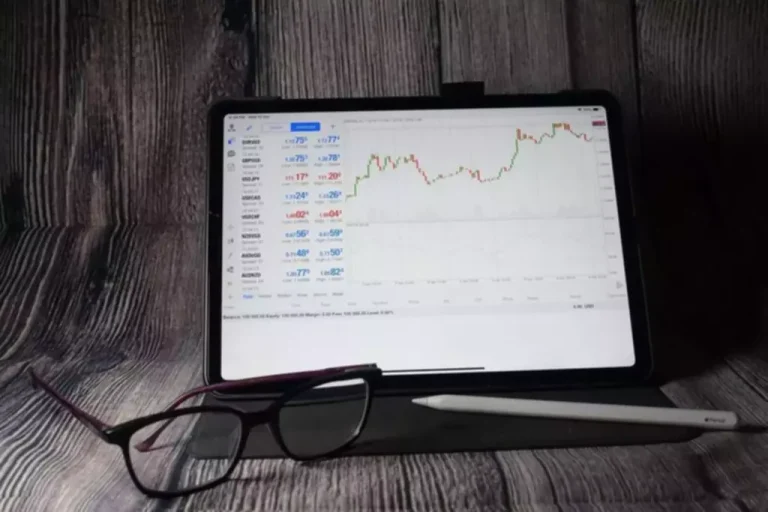Content
Analysts forecast future stock market prices using various past share performance statistics. When evaluating share price, technicians usually use overall trend, areas of resistance and support on the charts, https://www.xcritical.com/ and price momentum. Technical analysis uses data from short periods of time to develop the patterns used to predict securities or market movement, while fundamental analysis relies on information that spans years.
Strategic Convergence: When Technical Meets Fundamental

Do your own research difference between fundamental and technical analysis to find out more about fundamental and technical analysis and determine which approach fits your goals. If enough traders are following the same technical indicators to make trades, it can drive enough volume to that action to influence the asset’s price as hoped for. Once an investor develops a successful fundamental analysis strategy, they are able to identify value stocks. Traders like Warren Buffett, a major proponent of value investing, have found huge success taking long positions on undervalued stocks following analysis of their fundamentals. By pre-empting a price movement based on past trends, the trader may be able to find the best entry or exit point for the trade. Technical analysis uses a variety of strategies to determine value, such as moving averages, Fibonacci retracements and Bollinger bands.
How Technical Analysis Suits Short-Term Traders
Trading effectively in the stock market often involves making informed decisions using fundamental and technical analysis. Each method offers unique insights to help traders understand when and what to trade. Here’s a guide to enhancing your trading strategy using fundamental and technical analysis. Fundamental analysis and technical analysis help you trade better and understand how the Know your customer (KYC) stock market functions.
CFI Financial Group Official Sponsor of
- Diversification involves spreading your investments across various asset classes, industries, and geographical regions to reduce the impact of any single investment’s performance on your overall portfolio.
- The fundamental way of studying information focuses on the historical value of a share.
- 72% of retail client accounts lose money when trading CFDs, with this investment provider.
- While some investors prefer the use of a single analysis method to evaluate long-term investments, a combination of fundamental, technical, and quantitative analysis is the most beneficial.
- It involves examining various factors related to a company’s financial health, performance, and overall outlook.
It includes analyzing statistical trends obtained from market activities such as price and volume. Maintain a flexible approach by continuously monitoring a company’s core economic indicators and market performance. Adjust the strategy based on new economic data, company performance updates, and changing market trends to ensure its ongoing relevance and effectiveness. VectorVest is a unique platform that synthesizes both fundamental vs technical analysis, offering investors a comprehensive view of the market in real time. No more toggling between different platforms or getting lost in a sea of data.
Fundamental analysis vs technical analysis are two primary methods investors use to evaluate and predict the future price movements of securities, like stocks, bonds, crypto currencies, and Forex. Each method takes a different approach to analysis and is used for different investment strategies. Technical analysis aims to predict future stock prices by analyzing past price movements and patterns. It focuses solely on price and trading volume data, ignoring economic factors. Technical analysts believe that price movements follow identifiable patterns and trends, which can be used to forecast future price changes.
The risks of loss from investing in CFDs can be substantial and the value of your investments may fluctuate. 72% of retail client accounts lose money when trading CFDs, with this investment provider. CFDs are complex instruments and come with a high risk of losing money rapidly due to leverage. You should consider whether you understand how this product works, and whether you can afford to take the high risk of losing your money. Assets are priced based on both rational factors – like a company’s earnings, forward guidance and the macroeconomic context, and irrational factors – like wider market sentiment and media coverage. Trying to predict stock prices based on past trading data has long been a topic of heated discussion, with many academics and professional investors being skeptical about its effectiveness.
They will be able to use this to understand whether their own valuation of the asset is appropriate or not. A strong fundamental investor may be able to identify if a stock’s movement is fair based on reactions to its latest financial data, then spot an opportunity to sell or buy shares accordingly. For example, when trading shares, a fundamental analyst will look at a company’s earnings. Meanwhile, a forex trader would respond to macroeconomic data for the country in question, like GDP or inflation. It is worth noting that the main function of fundamental analysis is to make an excellent investment, whereas technical analysis is often used for trading purposes.
In turn, Warren Buffett, one of the most successful investors in history, strongly advocates for the use of fundamental analysis in making investment decisions. Next, we’ll delve into how different analysis methods can influence and inform diverse investment strategies and adaptability to shifting market conditions. Next, we’ll uncover the mechanics of these two methods, beginning with an exploration of the essence of fundamental analysis before moving on to the realm of technical analysis.
People who do the fundamental analysis are usually thinking long-term about investments, looking at how a company might do over many years. Fundamental analysis looks at a company’s financial health, like how much money it makes and its place in the industry. Stay updated with financial news and economic indicators, and adjust strategies based on market conditions. Instead, it saves you time and effort by boiling down all the key insights you need into 3 simple ratings – relative value (RV), relative safety (RS), and relative timing (RT). And, our intuitive market sentiment indicator gives you insights into market conditions on any given day.
Information contained on this website is general in nature and has been prepared without any consideration of customers’ investment objectives, financial situations or needs. Customers should consider the appropriateness of the information having regard to their personal circumstances before making any investment decisions. Investments in securities market are subject to market risks, read all the related documents carefully before investing. The contents herein above shall not be considered as an invitation or persuasion to trade or invest. I-Sec and affiliates accept no liabilities for any loss or damage of any kind arising out of any actions taken in reliance thereon. Fundamental analysts can use a stock’s price history to gauge its reaction to repeated events, such as earnings, the release of a macroeconomic date or policy announcements.
However, you need the right skills and enough trade knowledge to be successful! It’s a research method that proves that price changes and trend direction are vital to watch. It comes from the inbuilt belief that price patterns from the past and present help predict where it will go in the future. The fundamental way of studying information focuses on the historical value of a share.
This type of analysis requires a holistic view of the company that accounts for changes facing the U.S. economy, the industry and the company itself. It calls for more specialized financial knowledge than price movement data-driven technical analysis. Buffett emphasizes the importance of understanding a company’s underlying business before investing. He believes in studying a company’s financial statements, competitive advantages, management team, and economic moat (sustainable competitive advantage) to determine its intrinsic value. Comprehending market sentiment and effectively employing technical tools can enhance decision-making and overall trading performance for investors in the stock market. Technical analysis focuses, on the other hand, on a method akin to a meteorologist forecasting the weather based on historical patterns.

Fundamental and technical analyses are not limited to stocks; they are also applicable in bond, commodity, crypto and forex markets. This section explores how each analysis method is used across different market segments, highlighting their versatility and adaptability. Technical analysis mostly looks at past price charts and trading volume, or how many stocks are being traded. It uses stuff like financial statements, which are reports of a company’s money, and economic indicators, which show how the economy is doing. Technical analysts can identify trading opportunities and make informed decisions about when to enter or exit a trade.
The services and products are not available to all customers or in all geographic areas or in any jurisdiction where it is unlawful for us to offer such services and products. You conclude that Company Y appears like a sound investment and make your purchase accordingly. Consequently, you might consider taking a long position, which will help you if the stock price increases. IG International Limited is part of the IG Group and its ultimate parent company is IG Group Holdings Plc.















